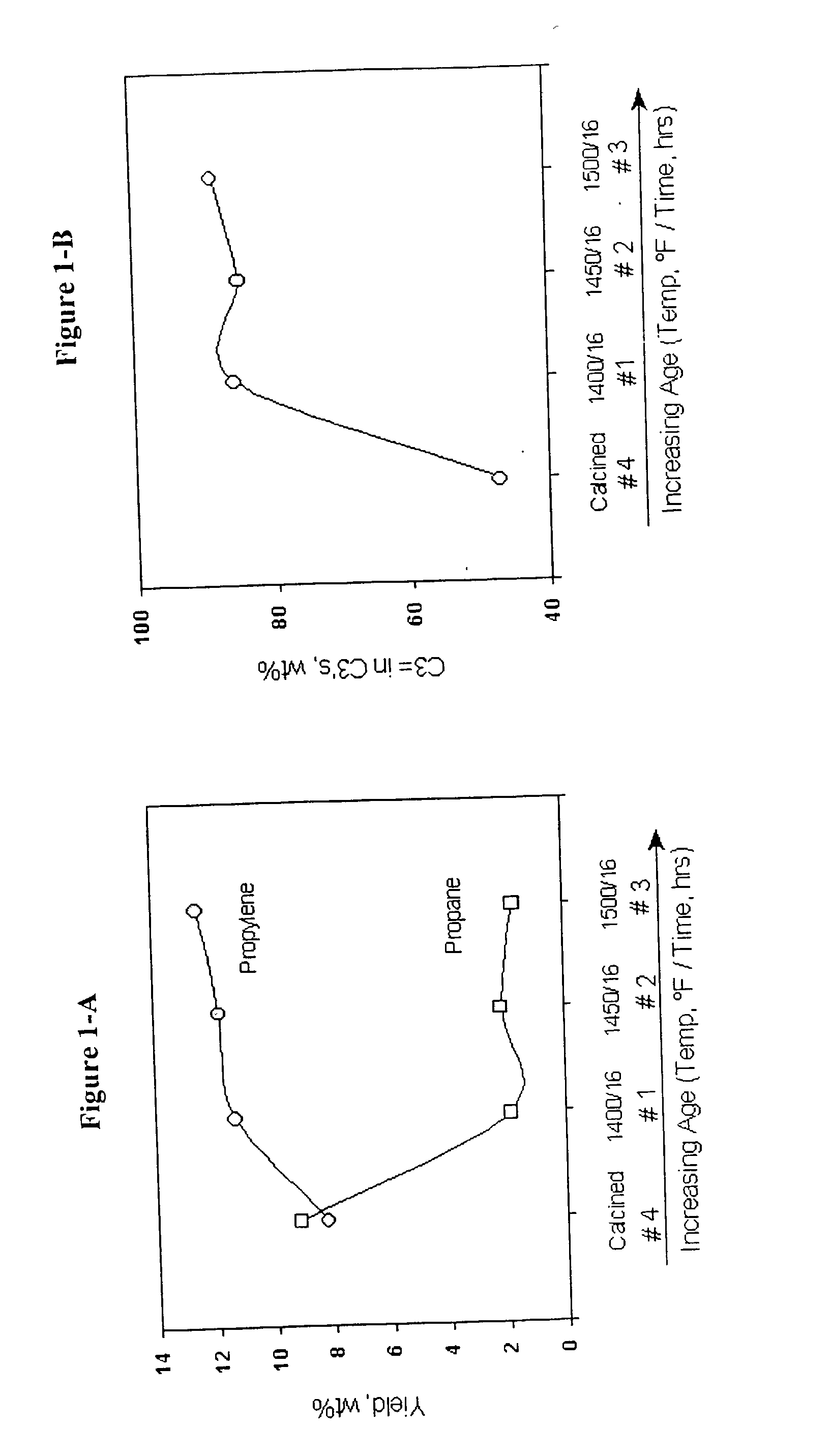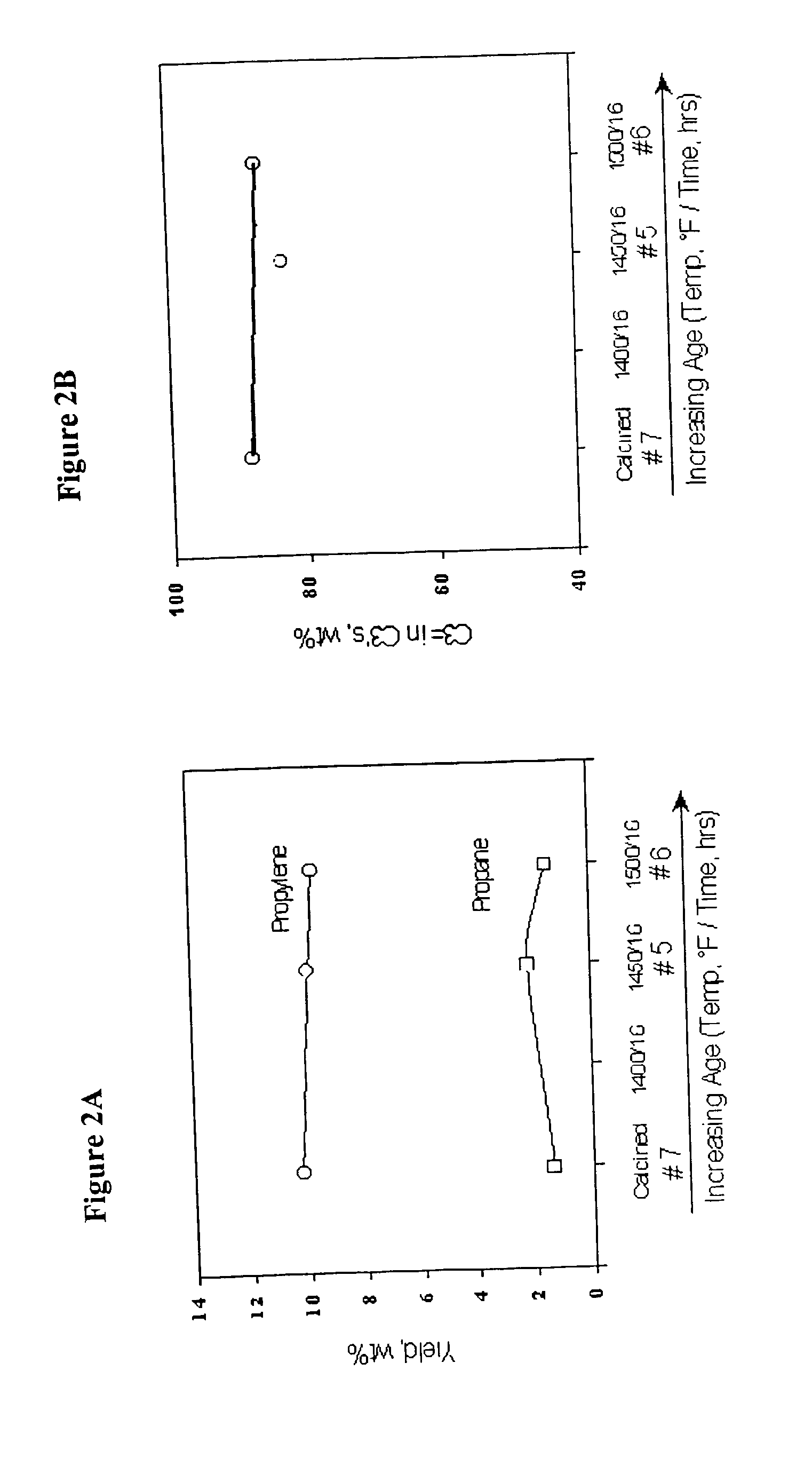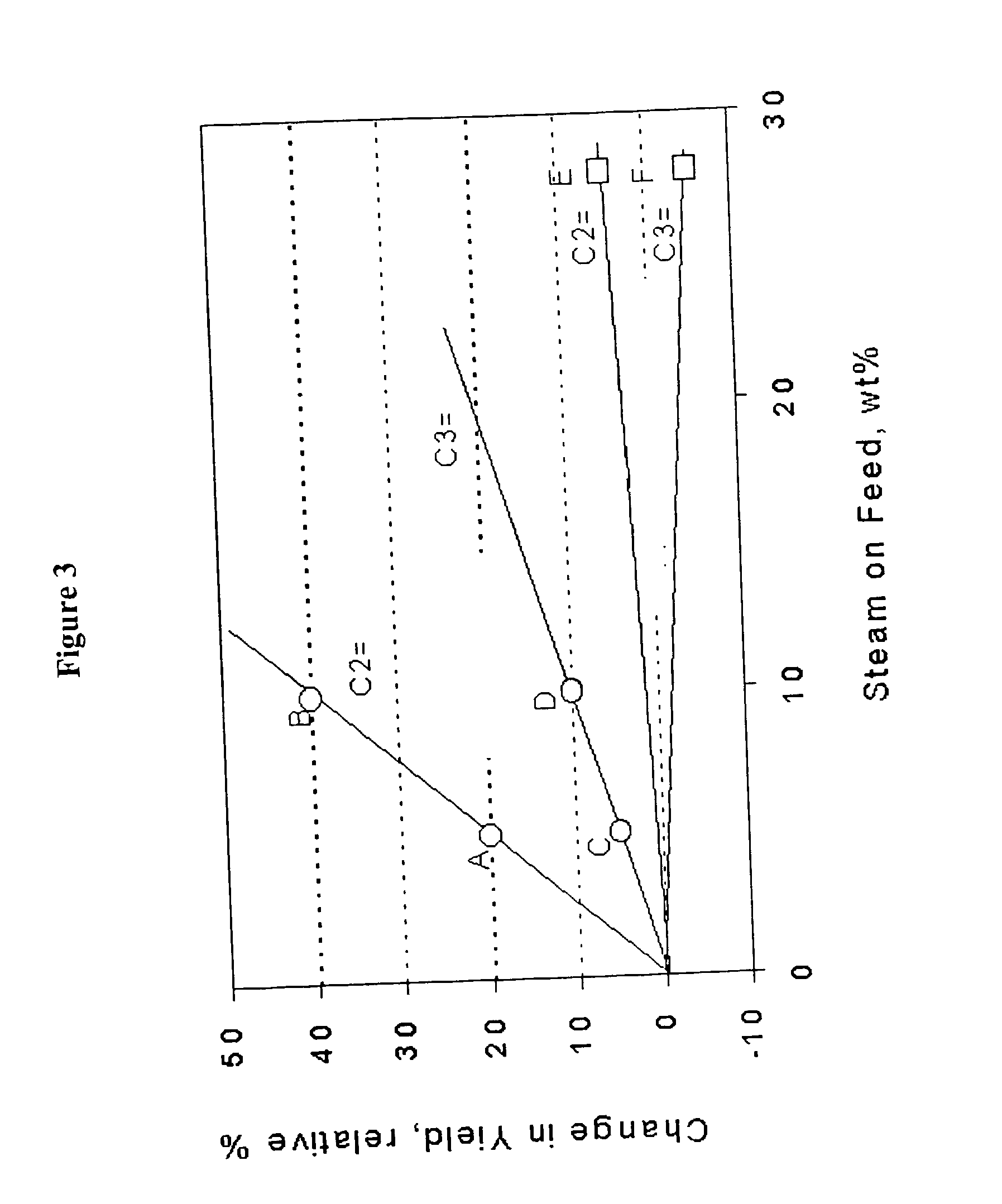Process for selectively producing light olefins
a selective production and light olefin technology, applied in the field of selective production of light olefins, can solve the problems of increasing the cost of recovery of desirable light olefins, high operating cost, and large capital investment required by the process, and achieves the effect of reducing the cost of recovery of undesirable light olefins and reducing the cost of recovery
- Summary
- Abstract
- Description
- Claims
- Application Information
AI Technical Summary
Problems solved by technology
Method used
Image
Examples
Embodiment Construction
[0063] 1. Three samples of the same conventional naphtha cracking catalysts having 40 wt. % ZSM-5 content were calcined at 1000.degree. F. for four hours and then steam activated at a steam pressure of 1 atmosphere external to the naphtha cracking reactor under conventional conditions at 1400.degree. F. (sample 1), 1450.degree. F. (sample 2), and 1500.degree. F. (sample 3) for 16 hours. For comparison purposes, a fourth sample (sample 4) was not steam treated but calcined at 1000.degree. F. for four hours. The four catalysts were employed under simulated riser reactor conditions to convert a catalytically cracked naphtha boiling in the range of C.sub.5 to 430.degree. F. and having a 22 wt. % olefin content. Conversion conditions included a reactor temperature of about 575.degree. C. and a catalyst to naphtha (wt. / wt.) ratio of about 10. As can be seen in FIG. 1-A, the three samples that were steam pretreated showed an increased activity for propylene production and a decreased activ...
PUM
| Property | Measurement | Unit |
|---|---|---|
| pore diameter | aaaaa | aaaaa |
| temperature | aaaaa | aaaaa |
| weight ratio | aaaaa | aaaaa |
Abstract
Description
Claims
Application Information
 Login to View More
Login to View More - R&D
- Intellectual Property
- Life Sciences
- Materials
- Tech Scout
- Unparalleled Data Quality
- Higher Quality Content
- 60% Fewer Hallucinations
Browse by: Latest US Patents, China's latest patents, Technical Efficacy Thesaurus, Application Domain, Technology Topic, Popular Technical Reports.
© 2025 PatSnap. All rights reserved.Legal|Privacy policy|Modern Slavery Act Transparency Statement|Sitemap|About US| Contact US: help@patsnap.com



